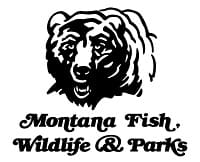FWP & Fort Belknap Tribes Sign Bison Agreement
Montana Fish, Wildlife & Parks 08.15.13

An agreement signed Wednesday between Montana’s wildlife agency and the Fort Belknap Indian Community allows for the translocation and multi-year care of about three dozen disease-free bison on the reservation.
With the recent Montana Supreme Court decision that validates the transfer of bison between tribal lands, up to 35 bison are set to be translocated from the Fort Peck Indian Reservation to the Fort Belknap Indian Reservation later this month. Fort Belknap officials are responsible for moving the bison.
The pending transfer will follow another round of disease testing and marking by the U.S. Department of Agriculture’s Animal and Plant Health Inspection Service.
The Fort Peck Reservation bison were among 61 moved last year from a quarantine facility near Gardiner, north of Yellowstone National Park. The bison – and their recent progeny – now number 76 animals and are part of a quarantine feasibility study (QFS) that began in 2004. The study aimed to create a group of bison free of the bacteria that causes brucellosis, a disease that results in miscarriages in some pregnant animals, including domestic cattle, and bison and elk.
USDA-APHIS will help Fort Peck wildlife officials conduct the additional testing on all of the Fort Peck Reservation’s QFS bison on Aug. 20. While these bison have tested negative in the past, the animals being transferred to the Fort Belknap Reservation will not be moved until the results of this most recent testing have be confirmed.
The Memorandum of Understanding between Montana Fish, Wildlife & Parks and the Assiniboine & Gros Ventre Tribes of the Fort Belknap Indian Community, includes commitments from the tribes to: (1) move QFS bison from the Fort Peck Reservation to the Fort Belknap Reservation; (2) to continue disease testing through April 2017; (3) properly contain QFS bison; (4) immediately respond to any QFS bison escape; (5) take sole responsibility for any damages caused by escaped QFS bison; and (6) provide Montana with disease-free QFS progeny bison for future conservation efforts. There are no infrastructure costs for FWP to pay.
The bison originally came from Yellowstone National Park’s bison herd. The animals were repeatedly tested for brucellosis during three different phases of the 8-year-long study. The bison are now considered to be brucellosis-free, but follow-up testing will nonetheless continue through April 2017 on both the Fort Belknap and the Fort Peck reservations.
Fort Belknap was evaluated as a potential bison translocation site in 2010 in an environmental assessment that considered moving disease-free bison from the quarantine facility. The QFS bison will be placed in a 965-acre pasture that is separated from ones currently being grazed by cattle or the tribes’ existing herd of 450 bison. Fort Belknap tribes recently completed a new fencing project around the pasture that meets the standards for containment of bison.
Tribal leaders on both reservations note that bison are a keynote species that have important biological, historical, cultural, religious, socio-economic and recreational values to their members.
The MOU is available online at fwp.mt.gov. Click “Fort Belknap Bison MOU“.

